It was a really enjoyable Friday this week, with a splendid visit from Paul James, who came all the way from Australia to visit Jeff's Place.
Paul is a super nice guy, as well as a really knowledgable audio guy who likes to build valve preamps & amplifiers, and loudspeakers from scratch, and it was a true pleasure to have him visit, get to know him, and hear the stories of his audio adventures. Kindred spirits for sure!
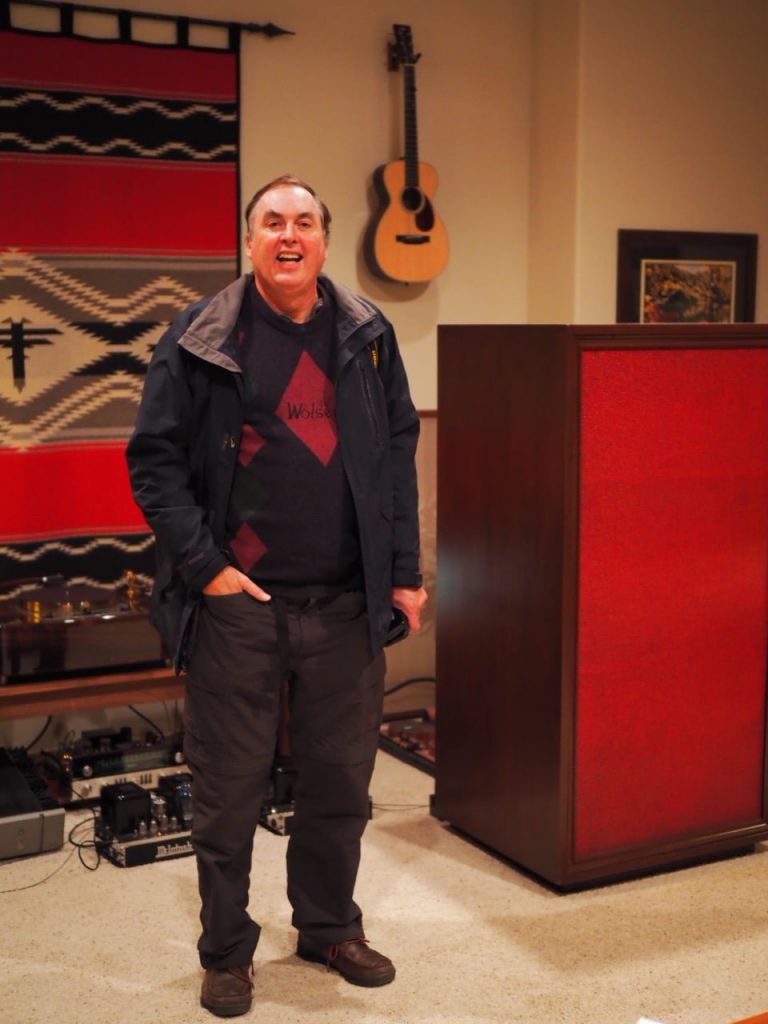
Paul James
Paul's been having a great time traveling in the US over the last 5 weeks, and has been getting in lots of live music performances as he goes.
Paul stopped at number of historic and musically important venues across the US, with live music concerts in New Orleans, and touring Sun Studio in Memphis (the recording studio that was opened by rock-and-roll pioneer Sam Phillips in 1950), for example, as well as many other fine musical and historic adventures.
Paul also visited NASA, the Thomas Edison and Henry Ford museums, toured Independence Hall in Philadelphia, the birthplace of the United States, and saw where the Declaration of Independence was signed and where the U.S. Constitution was created, as well as other many other cool adventures too numerous to mention in a short blog post!
Paul certainly inspired me to get out traveling a little more in the US, and see some of these historic sites, and experience the essence of US culture and history that I normally take for granted. I feel some adventures coming up!
Paul has been stocking up on hard-to-find vinyl during his travels as well, focusing on early American music, visiting obscure but well stocked record stores during his travels, and sending boxes of rare record finds back to Australia to await his return home.
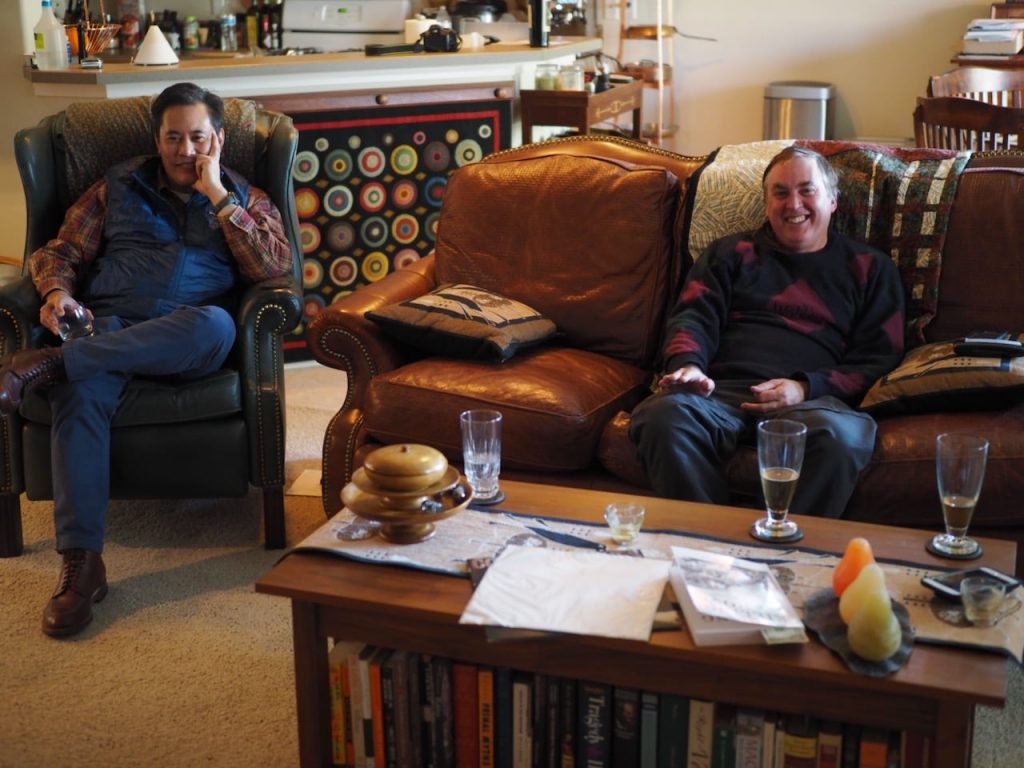
Doc Leo (left), Paul (right).
Doc Leo was able to break away from the surgery for a while and joined us for some hifi fun & games as well, and we had a really nice vintage hifi listening session with some excellent vintage blues, Cajun, Johnny Cash, and big band records that Paul found during his travels in the US, with a few jazz and rock & roll albums thrown in by yours truly.
We listened to my vintage "Stokowski" Altec's with their Duelund CAST tinned-copper crossovers (the feature article at Positive Feedback about the Duelund-Altec Project is HERE), my vintage McIntosh MX110Z tuner-preamplifier, my vintage McIntosh MC30 monaural amplifiers, my CTC Garrard 301 turntable, an Ortofon SPU Classic GM MkII stereo phono cartridge (on the Woody SPU tonearm), and lots of good ol' vintage vinyl made for a fun time.
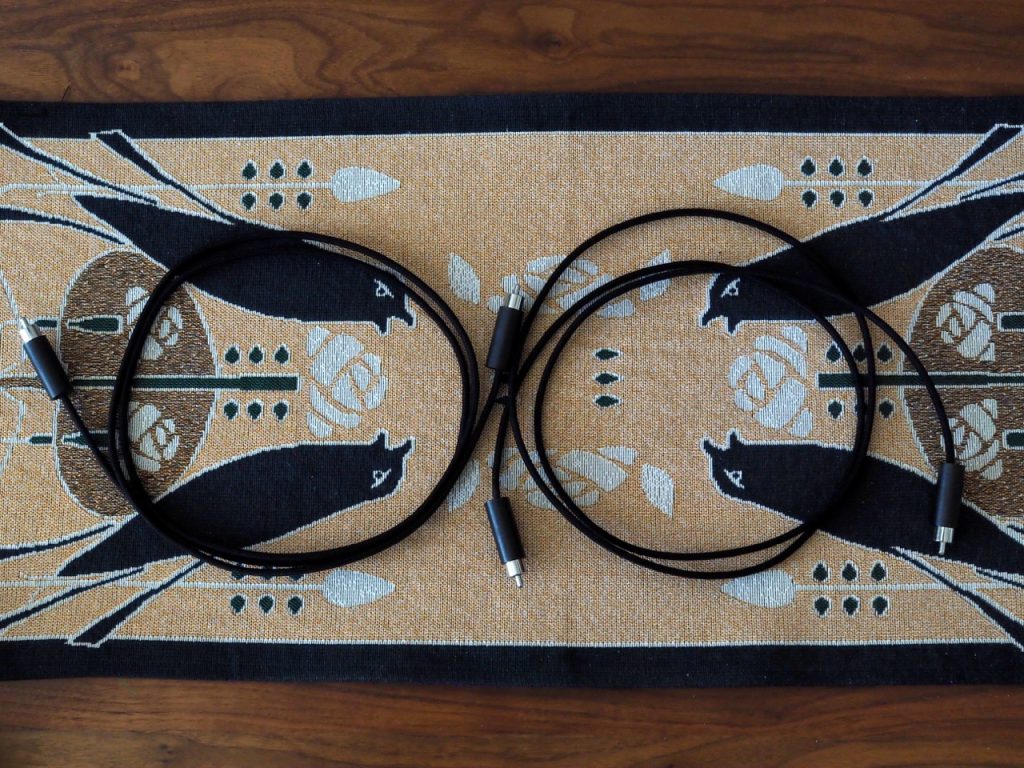
Duelund DCA16GA interconnects with Duelund plastic-free RCA's.
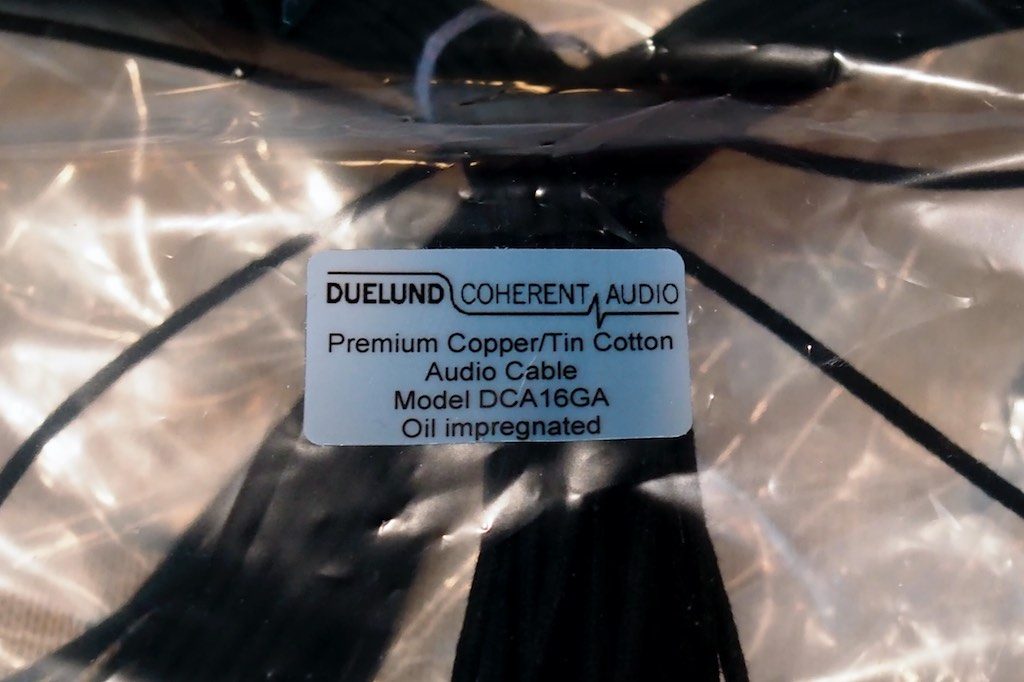
Vintage inspired Duelund DCA16GA tinned-copper wire as speaker cables.
Speaker cables and interconnects were built from the vintage inspired Duelund DCA16GA tinned-copper wire that is magic with my Altec's, with one pair of the interconnects featuring the new Duelund plastic-free RCA's that are super sweet sounding.
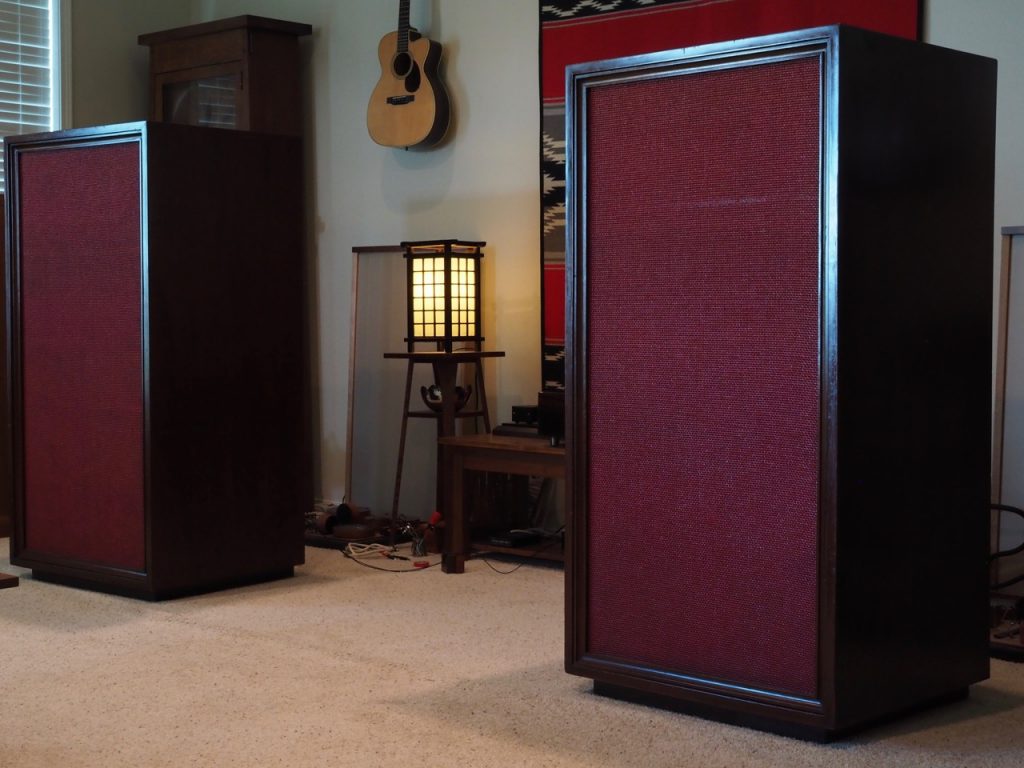
If you've read the "Duelund-Altec Project - Dare to Dream!" feature article at Positive Feedback you know I absolutely adore these vintage Altec loudspeakers with their state-of-art Duelund CAST tinned-copper crossovers, and if you haven't read it yet you should put it at the top of your reading list!
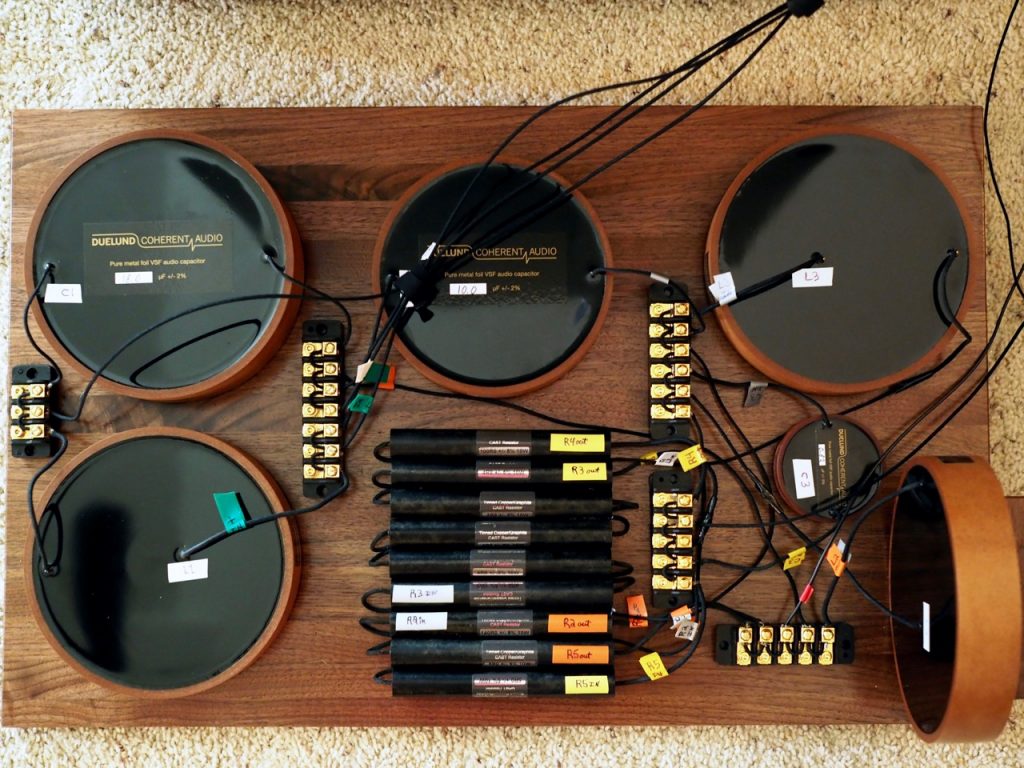
The Duelund CAST Sn-Cu crossover.
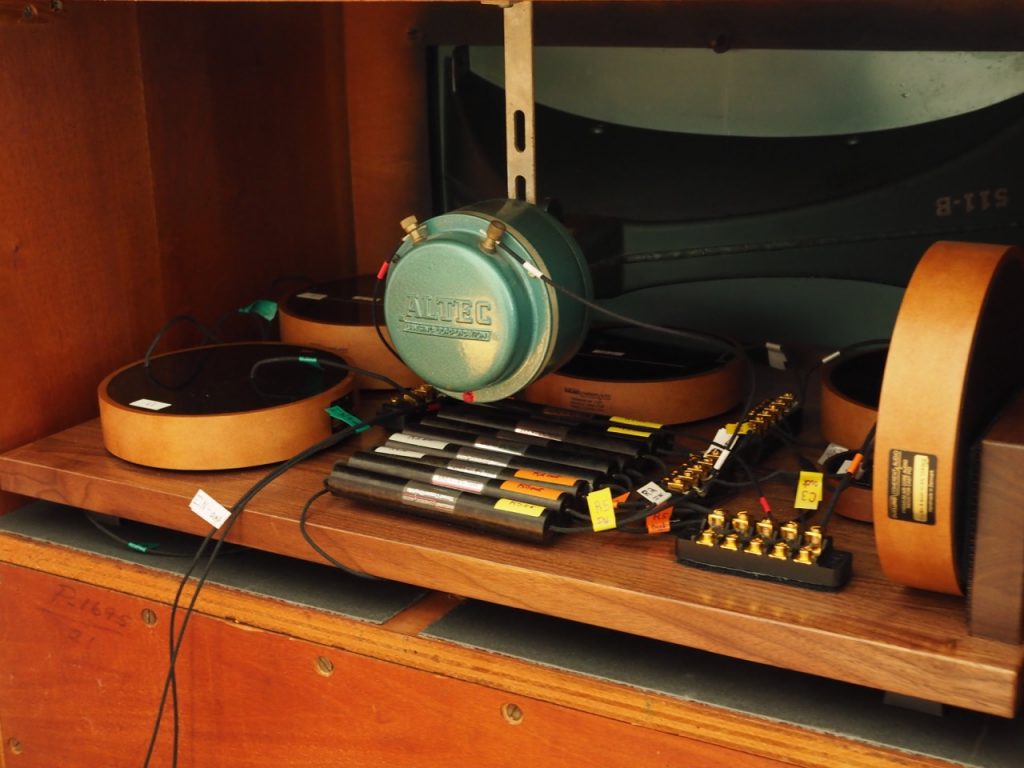
We did make one exception to our vintage listening with the Pass Labs XA25 stereo amplifier, a real sweetheart of an amplifier, but other than that it was a full vintage adventure day in hifi listening.
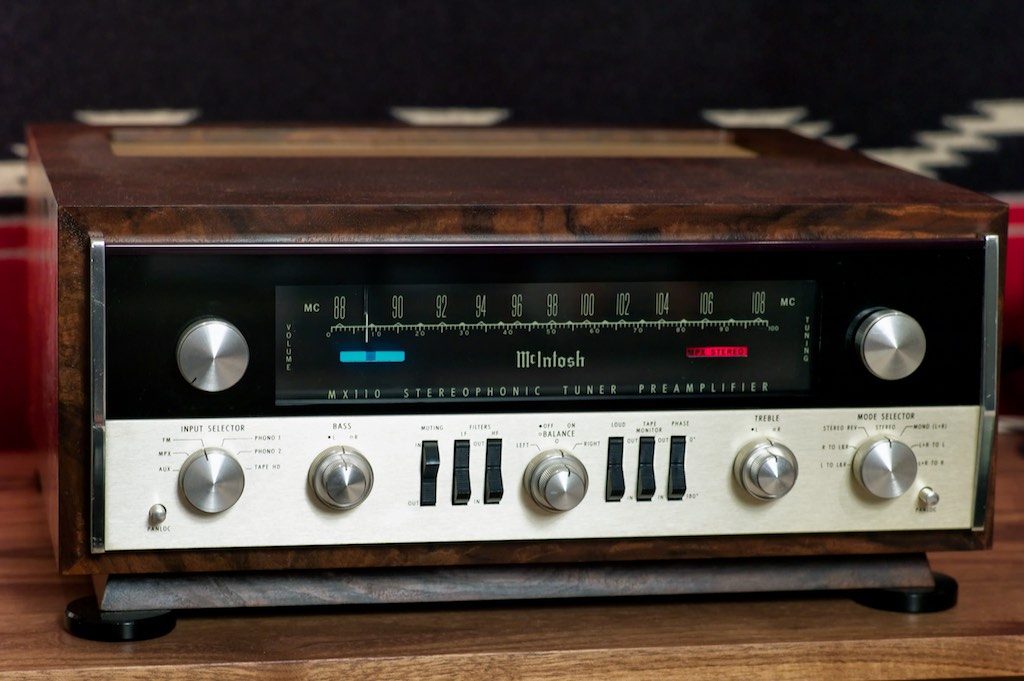
Vintage McIntosh MX110Z Tuner-Preamplifier
For a preamplifier we used my nicely restored vintage McIntosh Mx110Z stereo tuner-preamplifier, produced from 1962 to 1969, and it is a truly fine performer from the Golden Age of audio, with even Nelson Pass referring to it as a "fine preamp" when I proposed using it for the upcoming review of his Pass Labs XA25 stereo amplifier.
The MX110Z with its 27 vacuum tubes (!) may be somewhat bewildering to contemporary audio enthusiasts that are used to the stripped down, minimalist, preamplifier designs of today, as the MX110Z sports an FM tuner, phono stage, and equalization controls within its open vacuum tube chassis.
Like me, after living with the MX110Z for a while, you may wonder why all modern preamplifiers don't include FM tuners, phono stages, and equalization controls—they're great fun!
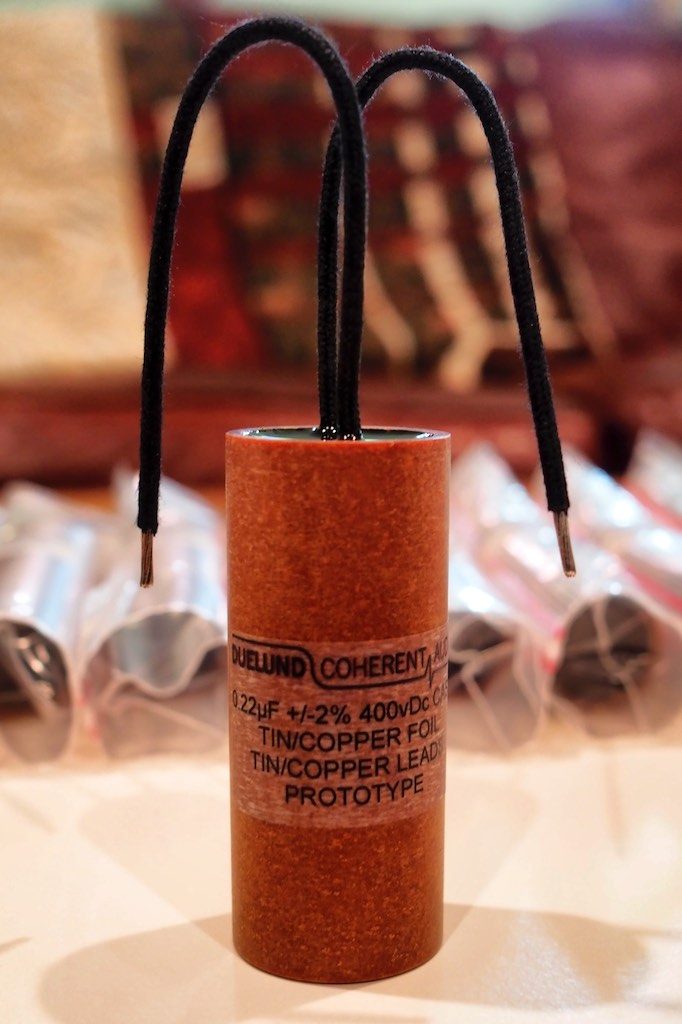
Prototype 0.22uF Duelund CAST tinned-copper capacitor.
I did modestly hot-rod my restored MX110Z by installing prototype 0.22uF Duelund CAST tinned-copper capacitors into its cathode follower, which produced a dramatic improvement in performance both musically & sonically.
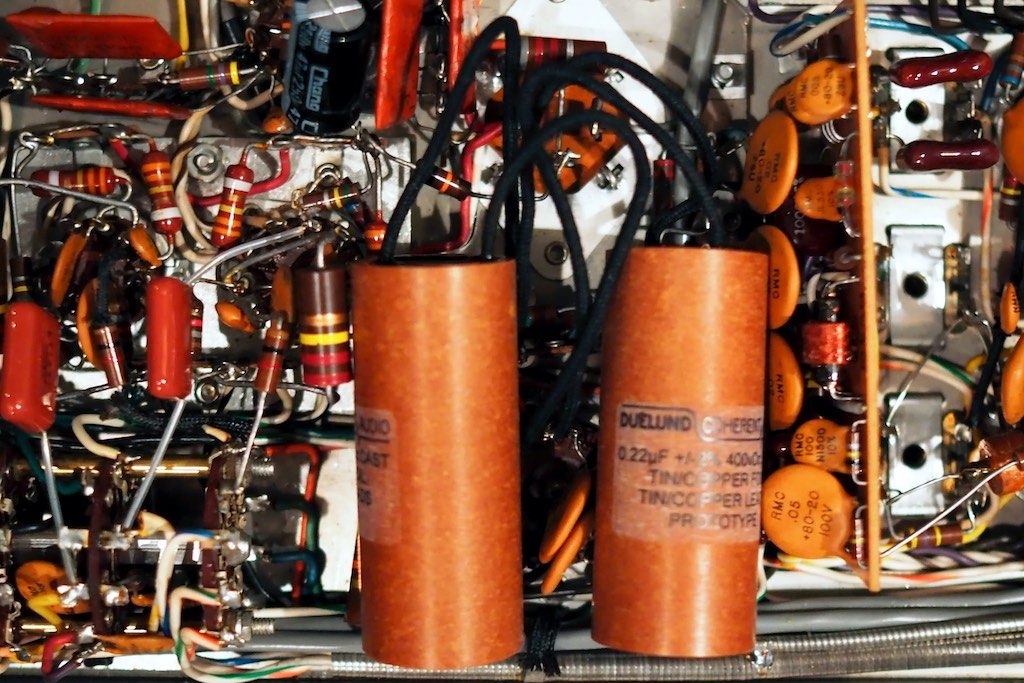
A pair of prototype 0.22uF Duelund CAST Sn-Cu capacitors that I've soldered into my vintage MX110Z McIntosh tuner-preamplifier.
For a turntable we used my über hot-rodded CTC Garrard 301 that you can read about in the "The Garrard Project 2015: From Simple to Spectacular!" feature article at Positive Feedback HERE.

CTC Garrard 301 turntable.
It had been ages - like a year - since I've had the pleasure of my vintage monaural McIntosh MC30 amplifiers in my main music listening system, and I hadn't yet had a chance to listen to them with the Duelund-ized Altec's, so I was really glad that Paul - being a major vacuum tube enthusiast - suggested we give them a listen in comparison to the Pass Labs XA25.
What a grand adventure to engage in, and we had a ball listening to these two very different approaches to audio amplification!
That got me to thinking that it would be fun to write up a blog post for you comparing the truly fine sounding Pass Labs XA25 Class A stereo amplifier to my beloved vintage McIntosh valve MC30 monaural amplifiers.
So welcome to a crazy comparison between the state-of-art Pass Labs XA25 Class A solid-state amplification to my hot-rodded vintage Audio Golden Age McIntosh MC30 monaural amplifiers (1954-1962)!
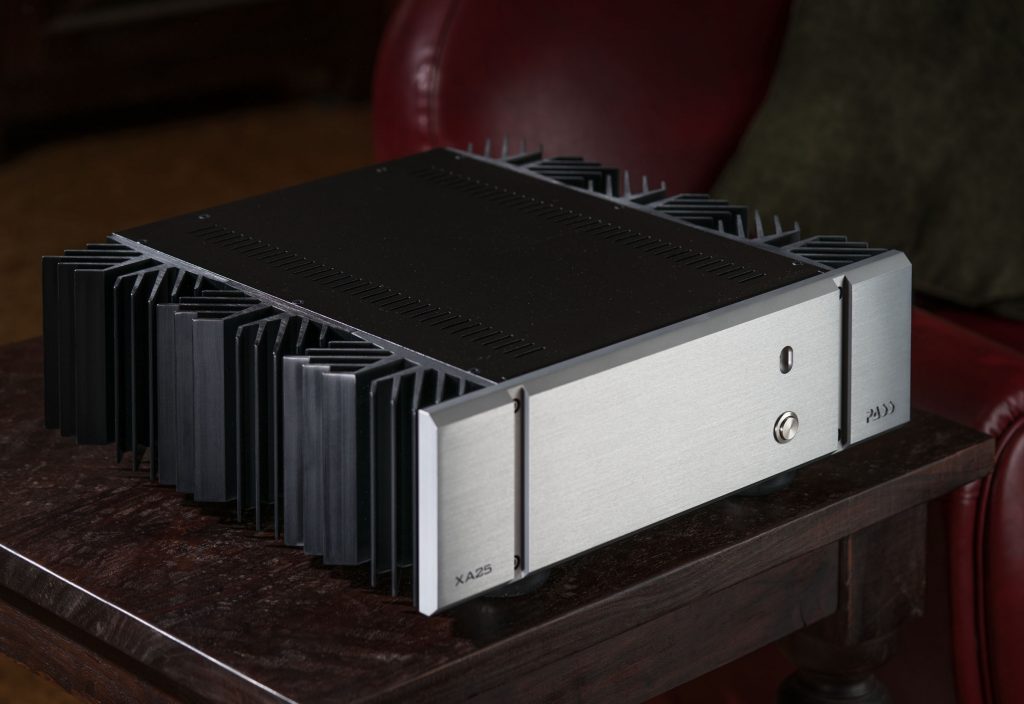
For more particulars about the Pass Labs XA25 Class A amplifier, see my recent "The Pass Labs XA25 stereo amplifier: Listening Impressions and Chatting with Nelson Pass!" Jeff's Place post HERE, where Nelson describes how he achieved the remarkable level of musical & sonic performance the XA25 is capable of.
Both of these amplifiers are examples of the best of their kind, with the Pass Labs XA25 Class A stereo amplifier representing a pinnacle of solid-state design in a low-powered amplifier, and the vintage McIntosh MC30 monaural amplifiers are long time favorites of mine as Audio Golden Era valve amplifiers, having brought me countless hours of listening enjoyment over the years.
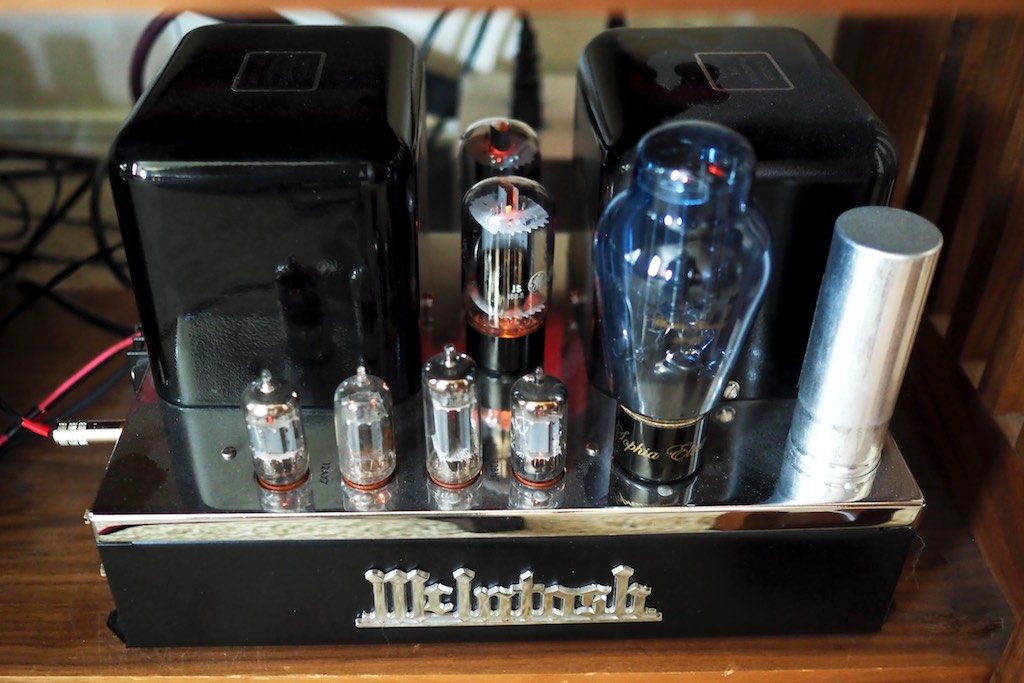
Vintage McIntosh MC30 monaural amplifiers with Sophia Electric 274B rectifiers and NOS GE 6L6GC power tubes.
Both of these amplifiers share similar power outputs, with the Pass Labs XA25 putting out 25 watts into 8 Ohms, and the vintage monaural McIntosh MC30s putting out 30 watts into 8 Ohms.
Both of these amplifiers are conservatively rated for their nominal power output, as the Pass Labs XA25 is able to put out 80 watts into 8 Ohms before clipping, and with the vintage monaural McIntosh MC30s able to put out about 60 watts before clipping.
The main difference power-wise between the two is that when driving the 16 Ohm "Stokowski" Altec's with the Duelund CAST tinned-copper crossovers, the Pass Labs XA25 drops to 40 watts at clipping into 16 Ohms, and the vintage monaural McIntosh MC30s have 16 Ohm taps on their transformers that allows them to maintain their 60 watts at clipping into 16 Ohms.
Both the Pass Labs XA25 and the vintage monaural McIntosh MC30s subjectively seem much more powerful than their nominal ratings of 25 watts into 8 Ohms and 30 watts into 8 Ohms because of the power reserves they are capable of, meaning they can both drive difficult loads easily and authoritatively, and respond to soaring dynamic peaks easily.
The McIntosh MC30 monaural amplifiers were sold from 1954-1962, and mine were restored by the famous record producer, vintage hifi enthusiast, and truly nice guy, Yves Beauvais, who did a beautiful job cosmetically & electronically restoring them with a well chosen compliment of components to voice them to musical perfection.
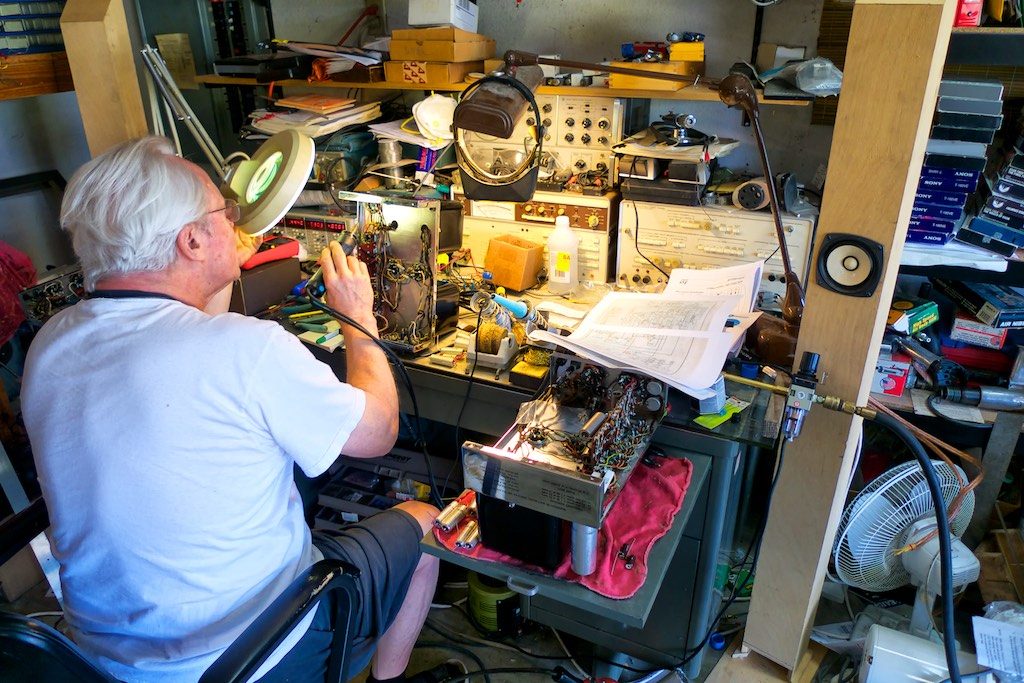
Ron-san hot-rodding the MC30s power supplies!
Yazaki-san, Ron-san, and I worked together to hot-rod my MC30s power supplies, which you can read about HERE in the Positive Feedback article "Adventures in Real Sound with Mr. Shirokazu Yazaki".
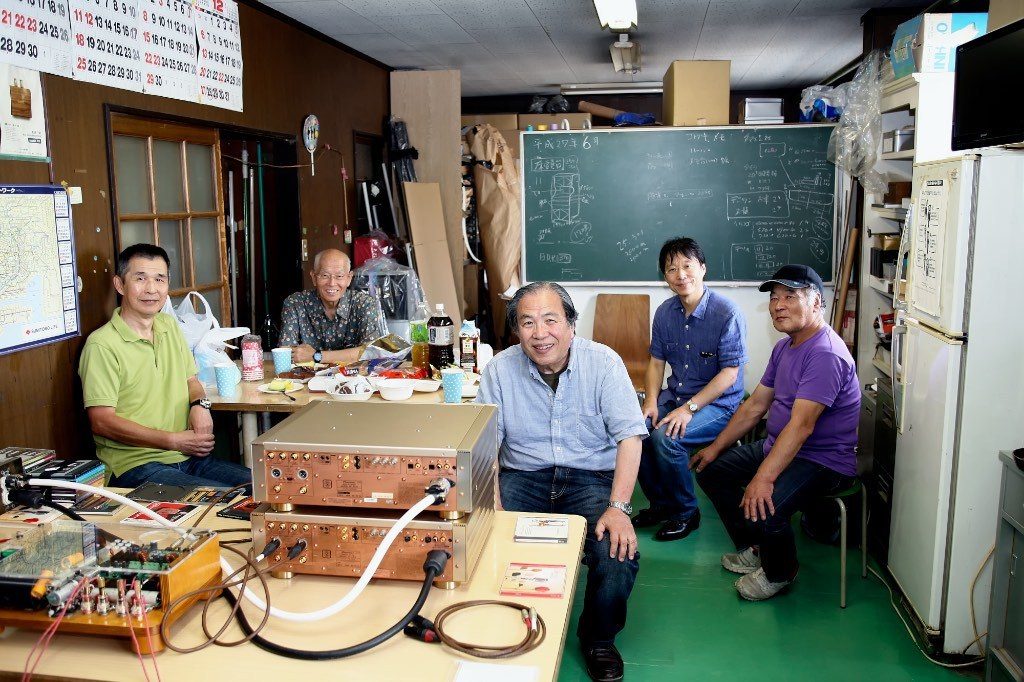
Yazaki-san (center) with friends in Tokyo.
Yazaki-san said:
"The quality of the dynamic response of the power supply is important for the changes in music signals, but we don't have an effective method to measure the characteristic of this dynamic response of power supply, so we have to listen and find out the sound of each part, rectifiers, capacitors, and resisters, that compose the power supply.
I studied how to strengthen the plate voltage of this power supply, and thankfully reached a few ideas in a day. The concept of improving it was mainly made of three points: the first was the insertion of high quality hermetic seal capacitors, the Arizona Capacitors, at the output of the rectifier, for getting highly responsive sound. The second change was to replace the voltage drop resister with the highest quality one, a vitreous enamel wire wound resister, called the Brown Devil, an important historic resister. It has a little, but specific inductance, and would work like a choke coil transformer, which was not adopted in the MC30. The third point was adopting the practically noise-free switching diode for fixed bias voltage.
Basically I wanted to use half-wave rectification according to the original circuitry of MC30, to keep away the complex switching noises of full-wave rectification or bridge rectification. That would bring out the full merits of fixed bias driving for the power tube.
I added the vintage NOS Mallory electrolytic capacitor for rectification and decoupling. I have known well the tonal character of the Mallory, and also regarded it as an excellent sounding benchmark, even to the present day. I am sorry to say that it is very hard work to find a dependable high-voltage electrolytic capacitor for tube amplifiers right now."
These vintage monaural McIntosh MC30 amplifiers remain my all-time favorite valve amplifiers, as they are truly special musical devices!
As I discussed in my "Duelund-Altec Project - Dare to Dream!" feature article at Positive Feedback, most people don't usually connect the terms "vintage" with "high-performance," assuming instead that these two terms must be mutually exclusive. After all, don't the latest models of hifi offerings being produced for audio enthusiasts today represent the maximum attainable performance by leaps and bounds over the vintage equipment?
Peter Qvortrup (Audio Note UK), certainly couldn't be accused of falling into the "most people" category on this topic, as I've discussed in previous blog posts here at Jeff's Place related to my recent visit with Peter in Brighton, England (and more to come).

Peter Qvortrup of Audio Note UK.
Peter says that the peaks of high-performance developments in the recording and audio arts occurred early in audio and recording history, with the performance peak for recording quality and software quality occurring from approximately 1950 to 1960, the performance peak for amplification quality occurring from approximately 1920 to 1930, and the performance peak for loudspeaker quality occurring in the late 1930s, which was led by cinema sound research & development.
Peter also says since those peak performance periods in hi-fi history, as time has progressed we have seen diminishing returns in performance advancements, or even diminishment in overall performance, in the recording and audio arts.
So that's not to say that there isn't some truly great audio gear being produced today, there certainly is, but rather that the advancements in performance in gear being produced today are present in diminishing returns - and the magnitude of those advancements might not be as great as many enthusiasts perceive - compared to the peaks of performance that occurred historically.
I certainly share Peter's perceptions about the peak performance periods of the audio arts based on my own experiences with vintage hifi gear, or obviously I wouldn't have engaged in the Duelund-Altec Project utilizing the ultra-high-performance Duelund CAST tinned-copper components in my vintage "Stokowski" Altec loudspeakers, and written an article about it.
I think I would expand Peter's range for the performance peak of loudspeaker quality a wee bit, and suggest a range from the late 1930s to the early 1960s, although it could be argued that those advancements from the late 1930s to the early 1960s are largely refinements of what was done in the late 1930s.
Nevertheless, the main point is still that this period of time was a period when huge efforts and financial resources were being poured into advancing cinema sound performance through research & development by companies like Western Electric and Altec, as well as other cinema sound companies around the world, and represents the peak performance period in the history of loudspeaker research & development.

These custom Altec loudspeakers were built for conductor Leopold Stokowski for listening to music in his home and represent an apogee of sorts for that loudspeaker performance period, and incorporated the accumulated insights, knowledge, and technology development for that period.
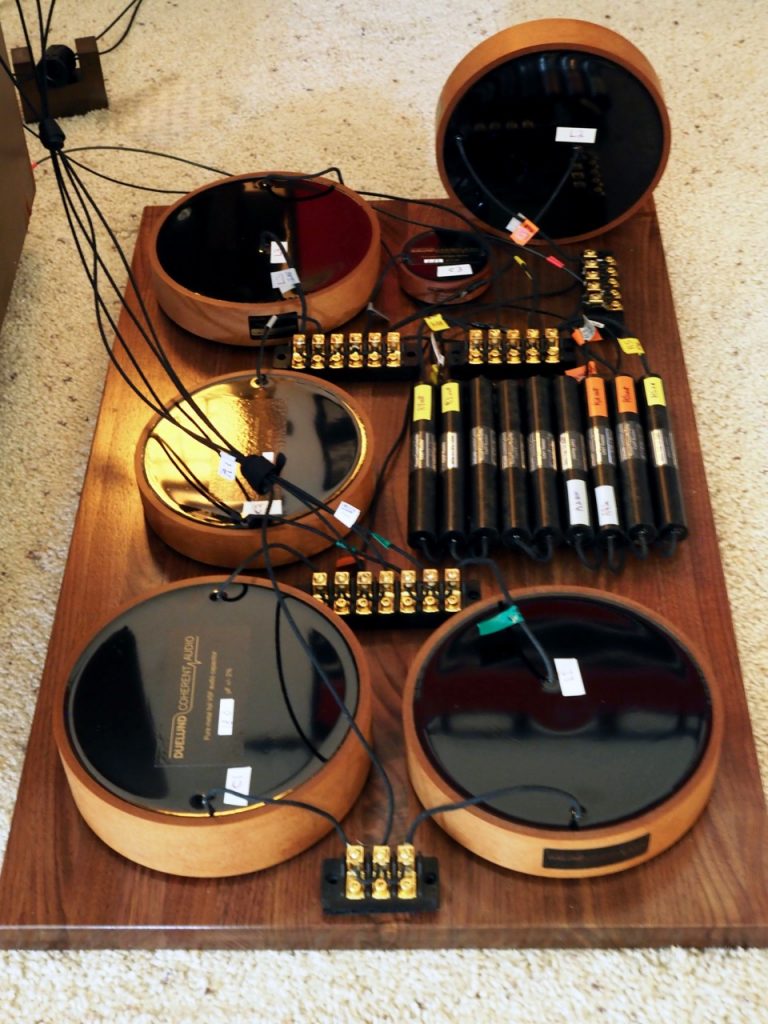
End view of the Duelund CAST Sn-Cu crossover.
What I found out about the Dr. Stokowski's custom Altec's fitted with the Duelund CAST tinned-copper crossovers was that they were more than competitive than the best loudspeaker designs of today, and I actually prefer their performance in those aspects that are important to me in music reproduction to any loudspeaker I've heard being produced today, so I would say Peter is right on about the historic peaks of loudspeaker performance.
But what about vintage vacuum tube amplifier performance compared to a current state-of-art solid-state design like Nelson's Pas Labs XA25?
Certainly the some of the best of the Audio Golden Age vacuum tube designs - like my hot-rodded monaural McIntosh MC30's - are fantastic, but how do they compare to a current state-of-art solid-state design like Nelson's Pas Labs XA25 Class A power amplifier, given solid-state designs didn't even exist during the peak of valve amplifier performance developments in the 1920s to 1930s?
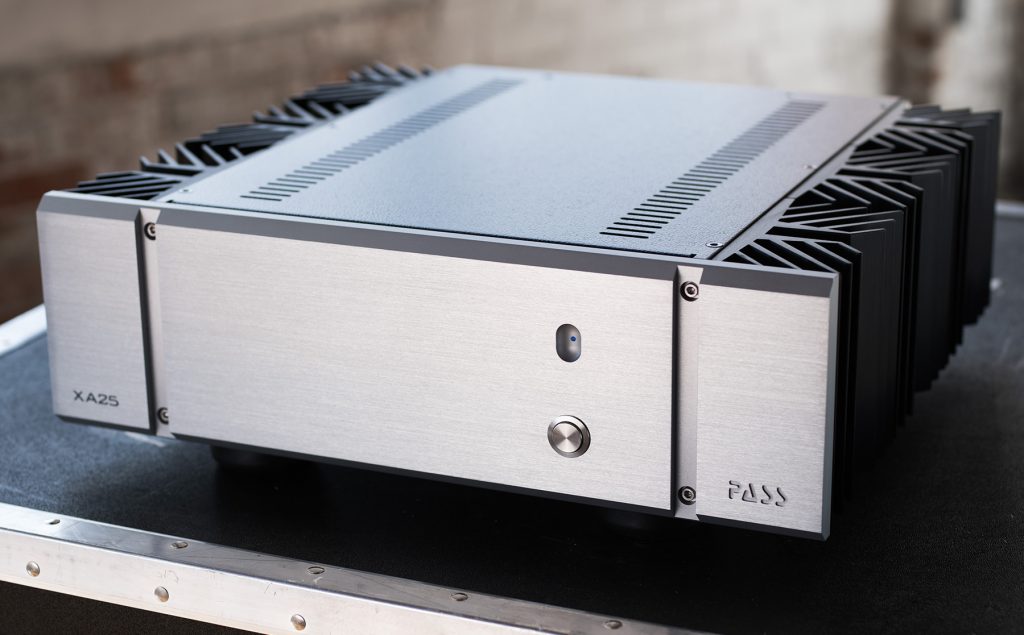
Pass Labs XA25.
I would say that the peak of performance development for solid-state amplification is occurring now, with designs like the Pass Labs XA25 and First Watt SIT-3, being examples of leading-edge solid-state amplifier designs.
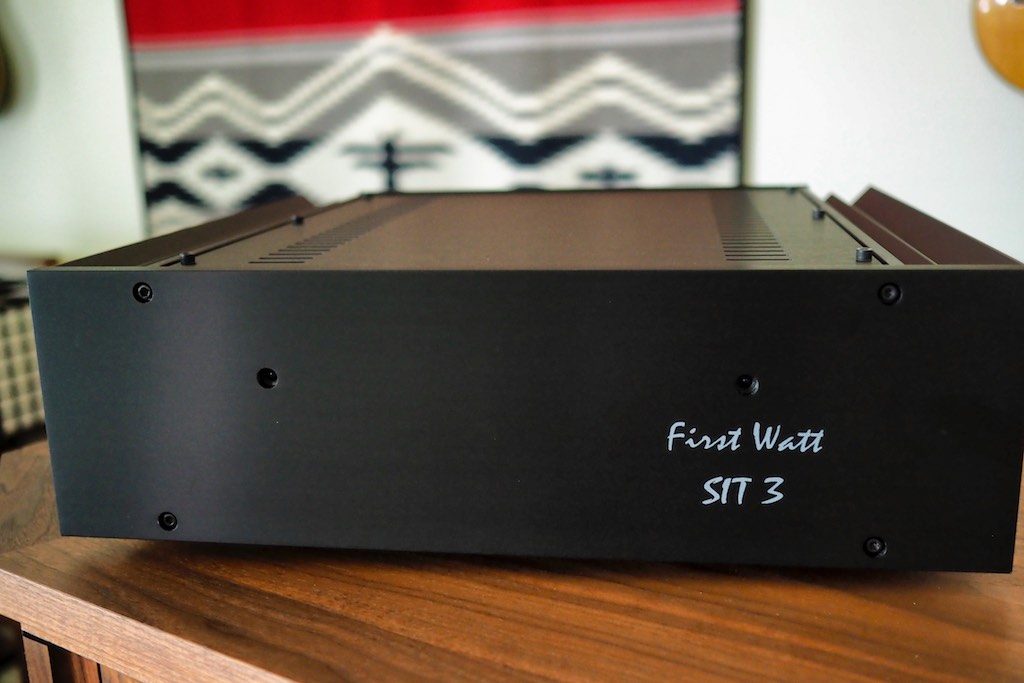
First Watt SIT-3 stereo amplifier.
With the the Pass Labs XA25 Class A solid-state stereo amplifier, and the vintage McIntosh MC30 monaural amplifiers, delivering examples of performance apogees for their periods of current solid-state and vintage vacuum tube designs, respectively, how do they compare in terms of absolute performance in todays terms?
My observations are that both Pass Labs XA25 Class A solid-state stereo amplifier and the vintage McIntosh MC30 monaural amplifiers deliver extremely high levels of musicality and visuospatial performance, and both are capable of providing a tremendous dose of emotional involvement from the music.
The Pass Labs XA25 stereo amplifier is extremely transparent, resolving, and distortion free, from the highest highs to the lowest lows. It easily provides the full spectrum of extreme dynamic performance, whether it was on the subtle gradations of pianississimo, or the "hang onto your hat" blasts of fortississimo, even at live-like sound pressure levels (SPLs). The XA also sounds incredibly powerful in contradiction to its nominal power rating of 25 watts (due to the formidable amount of power it can produce before clipping), and it can provide incredible bass slam when it's in the music, and yet it possesses the organic musicality and visuospatial characteristics that I normally associate with my favorite vacuum tube amplifiers like my vintage McIntosh MC30 monaural amplifiers, or the directly-heated singled-ended triodes (DH-SETs) I have owned in the past.
Vintage McIntosh MC30 monaural amplifiers are known for their 'spooky real' presence, their big, colorful, and dramatic presentation of music, and their ability to infuse music with deep color tones and rich timbral textures that makes the music sound vibrant and alive. With the Yazaki-san suggested modifications that Ron-san installed, it enhanced the sound of the MC30s even further, with a more elegant, rich, utterly natural, and timbrally gorgeous presentation, as well as a liquid, flowing, mesmerizingly musical overall presentation.
First off, I could live happily with either the Pass Labs XA25 Class A solid-state stereo amplifier and the vintage McIntosh MC30 monaural amplifiers powering my loudspeakers, they are both amazing amplifiers.
Both of these amplifier designs - one modern and one vintage - sound extremely good, but different in the way they combine their strengths in musicality, visuospatial performance, and emotional impact.
The Pass Labs XA25 is more resolving and transparent than the vintage Mac MC30s, which you can hear in more detailed and nuanced timbral textures, additional body to images, and the huge sense of space in the soundstage that it is capable of.
Subjectively, the XA25 feels much more powerful than the MC30s, even though its not on the 16 Ohm Altec's, and it has greater dynamic ability across the dynamic spectrum, and with impressive bass performance.
The vintage MC30s have a more liquid and flowing sound than the XA25, and tones seem to decay longer in time, with more relaxed overall "feel" to the music.
The XA25 makes music sounding exciting and engaging, with the MC30s sounding a little more colorful and romanticized.
Is there a clear winner here? Yes. They're both winners, and while they excel in different aspects of their musicality and visuospatial performance, the final verdict is that they are pretty much at the same high level when it comes to delivering emotional impact from the music, which is the most important factor for me.

The positives for the Pass Labs XA25 are its impressive level of performance, which is at the leading-edge of solid-state design. I think the XA25 - like the SIT-3 - represents what I consider the beginning of the Golden Age for solid-state design, which is occurring right now, and as such the XA25 represents the birth of a classic solid-state amplifier that can go toe-to-toe with pretty much anything out there from any period of time.
The XA25 is competitive with the best vintage vacuum tube designs in terms of its musicality, it excels in its visuospatial performance, and its ability to deliver emotional impact is superb. Other plusses are that the XA25 doesn't require expensive vacuum tubes to keep running, its going to be totally reliable for the long term, and at $4900 its a relative bargain for its superb level of performance.
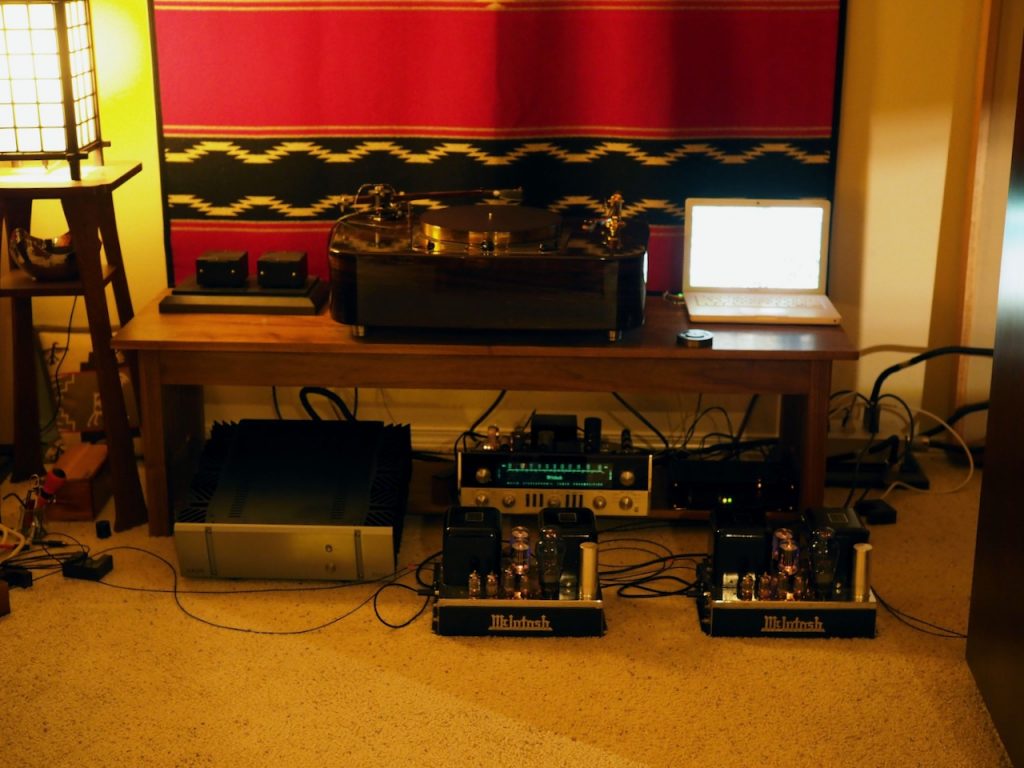
To get a pair of beautifully restored vintage McIntosh MC30 monaural amplifiers, and modify their power supplies like I did, it's probably going to cost about the same as XA25, or perhaps a little more.
Owning the MC30s is like owning a classic Corvette or Thunderbird, and there is certain pride of ownership that goes with owning a classic from the Golden Age of vacuum tube amplifier design.
There's also a certain charm in the flowing liquidity and colorfully dramatic presentation of the MC30s that is very endearing, and hands down I find the aesthetics of the glowing vacuum tubes of the MC30s to be much more beautiful than the utilitarian chassis of the XA25.

Vintage McIntosh MC30 monaural amplifiers with Sophia Electric 274B rectifiers and NOS GE 6L6GC power tubes.
Those glowing vacuum tubes come at a cost though, as the best sounding NOS vacuum tubes to keep the MC30s running are getting harder to find, are becoming much more expensive all the time, and eventually they'll become extinct and unavailable. The nature of vintage components will also require that you repair them occasionally when a potentiometer goes kaput, for example, or another vintage component like a resistor fails. It happens.
Are you surprised that one of the best examples of vintage vacuum tube amplifiers of the Audio Golden Age like the MC30s are competitive with a contemporary cutting-edge solid-state design like the XA25?
Are you surprised that a contemporary solid-state design like the XA25 is competitive with the classic vacuum tube McIntosh MC30 monaural amplifiers?
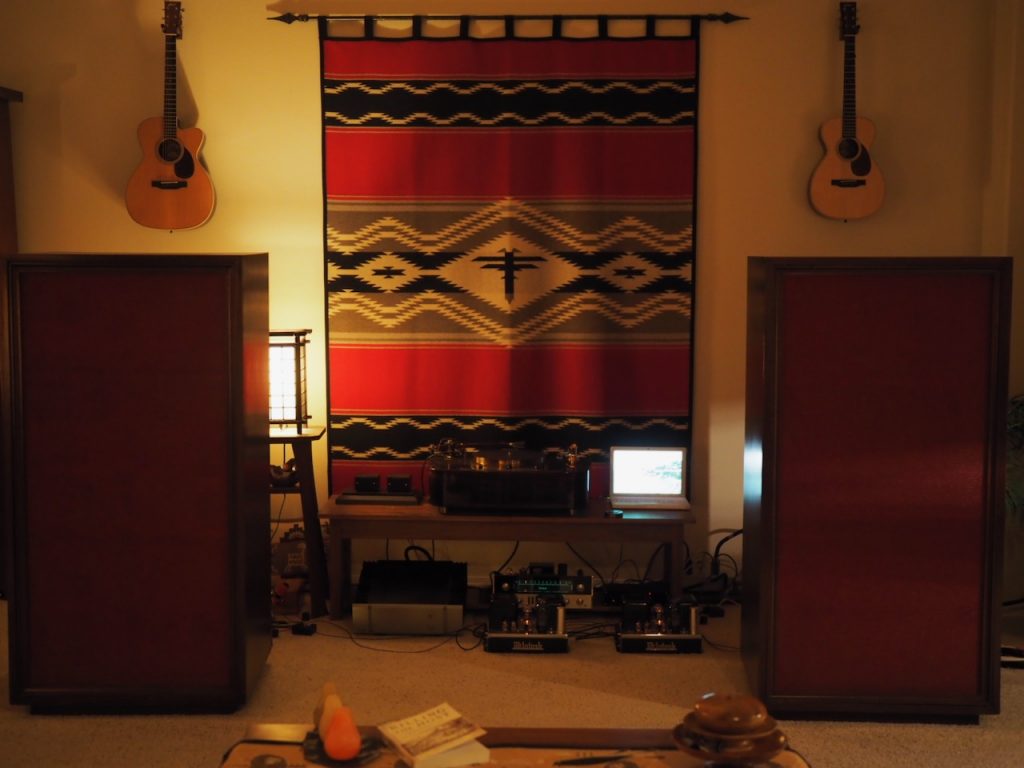
Well, it is a wonderful time to be an audio enthusiast when the best of the performance of the vintage Golden Age vacuum tube designs are converging with the best performing contemporary "Golden Age" solid-state designs like the XA25 and SIT-3 in terms of musicality, visuospatial performance, and delivering emotional impact.
So you have real, substantial, choices for building a true high-performance audio system with either solid-state or vacuum tubes these days.
Actually, one of your choices is to have examples of both, and switch between them as the fancy strikes you, and enjoy them for their unique blends of musicality, visuospatial performance, and ability to deliver emotional impact, just like you would enjoy the various flavor combinations associated with various fine Napa Valley Cabernet Sauvignons, featuring differing but complementary hints of plum, black cherry, blackberry, spices, vanilla, etc., flavors and aromas to excite your senses.
I actually find that approach to be a quite satisfying with amplifiers.
As always, thanks for stopping by, and may the tone be with you!



























